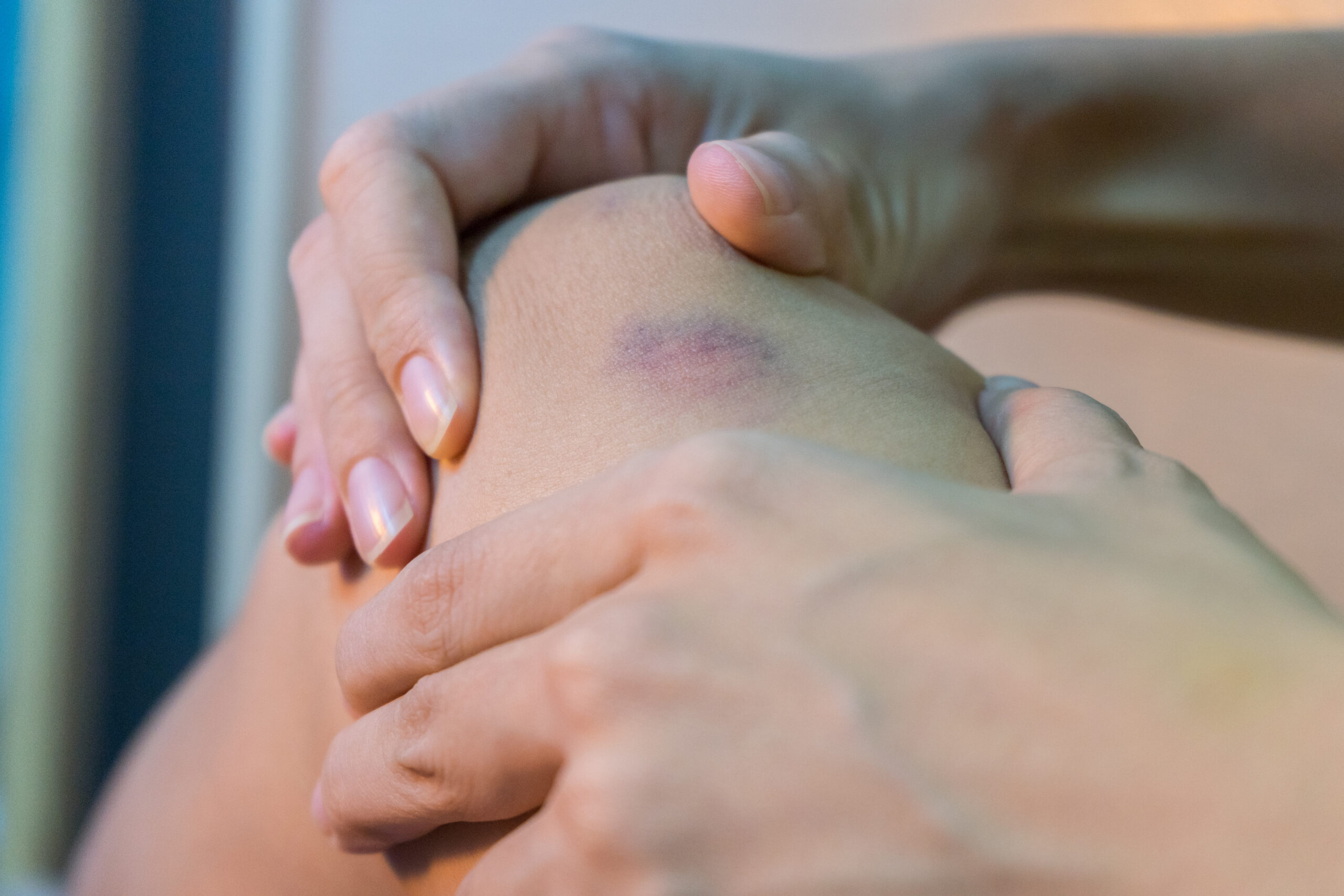
11 Oct How Serious Are Soft Tissue Injuries?
Soft tissue injuries are injuries to body tissues due to strenuous movement, typically from sports and other high-energy activities. Soft tissue injuries affect mostly the bone, cartilage, ligaments, muscles, nerves, and tendons throughout the body.
The classification of soft tissue injuries depends on which tissue is affected and the severity of the damage. These injuries can be quite severe and take a long time to heal. Their complex nature means soft tissue injuries are often treated over the long term to ensure complete healing.
What Are Some Common Soft Tissue Injuries?
Bursitis
Bursitis is an inflammation of the fluid-filled sacs known as bursae due to frequent and repetitive motion. These sacs surround the joints, giving them a cushioning effect against external forces.
This condition mostly affects elbows, shoulders, knees, hips, and common symptoms are pain, stiffness, and swelling. Treatment is often non-surgical.
Contusions (Bruising)
Contusions are muscle bruises that result from a fall against a hard surface, such as concrete, or a direct blow to the skin.
This injury results in skin discoloration from the blood that pools around the injury when the applied force crushes the subcutaneous connective tissue and muscle.
Muscle Sprains
Muscle sprains are acute injuries that result from the stretching or tearing of a ligament or joint.
These injuries vary in their severity, with the most severe affecting joint function. Sprains commonly occur around the ankles, knees, and wrists when someone twists their ankle or foot.
Muscle Strains
Muscle strains are acute injuries that occur to an individual muscle or tendon, or a connected group of muscles and tendons.
They are similar to muscle sprains and also vary in their severity. They occur mostly in the hamstring (muscle at the back of the leg) or the foot.
Tendinitis
Tendinitis is a type of injury that results in the irritation or inflammation of the tendon or the sheath that covers it. This condition occurs due to repetitive stress on the bursa subacromialis (a cavity that surrounds the shoulder joint), which causes bones to exert pressure on the tendons, irritating them.
The most common causes include the overuse of shoulders and legs. Golfer’s elbow and tennis elbow, for example, result in significant shoulder and leg pain.
The Severity of Soft Tissue Injuries
Strains occurring in tendons and sprains occurring in the overstretching of ligaments occur from accidents during strenuous activities such as sports.
The severity of muscle sprains and strains are:
- Grade 1 (Minor): This injury shows only minor tearing in ligaments or tendons with moderate pain and swelling. The joint function remains unaffected in these cases.
- Grade 2 (Moderate): This injury shows partial tearing in ligaments and tendons with moderate pain and swelling. This injury affects joint function.
- Grade 3 (Severe): This injury shows a complete tearing of ligament or tendons. The joint function is severely affected, and the pain is severe. In most cases, patients will need surgery to heal correctly.
How Long Do Soft Tissue Injuries Take To Heal?
The recovery times for soft tissue injuries vary depending on the severity of the injury, the person’s age, the patient’s general health condition, and their adherence to the treatment protocols during recovery.
Grade one soft tissue injuries can take one to two weeks to heal, while Grade 2 injuries can take up to a month to heal.
Severe Grade 3 soft tissue injuries require immediate treatment and typically take much longer to heal. If you are unsure of a soft tissue injury’s severity, contact a licensed physiotherapist for advice.
When Should You Seek Hospital Treatment?
If the injury is severe, it is advisable to seek help immediately from the nearest ER.
Severe soft tissue injuries exhibit symptoms such as:
- An audible pop or crack as the injury occurs.
- The patient is unable to put weight on the injured area.
- The bones surrounding the injury are painful.
- The injured area shows visible deformity.
- The presence of nerve damage like pins and needles or general numbness.
Soft Tissue Injuries Treatment
There are three main stages for the treatment and recovery of soft tissue injuries. These stages all follow the PRICE methodology, an acronym that stands for:
- Protect — Protecting the injury from further damage.
- Rest — Resting and avoiding activities that cause significant pain.
- Ice — Applying ice packs to the injured area for 15 to 20 minutes every three to four hours.
- Compression — Applying a tight bandage around the injury. The application should not cause pain or restrict blood circulation.
- Elevation — Raising and supporting the limb where the injury has occurred above the heart level of your heart to help reduce the swelling.
For complete healing, treatment should occur in the first 24 to 72 hours after the injury, following the PRICE methodology above, with pain relief helping patients throughout the recovery process. Recovering patients should avoid taking alcohol, exposure to heat, and massages, which may all cause further damage to the injury.
In severe cases of soft tissue injury, surgery may be necessary for the damage to heal well. These scenarios include a complete tear of the soft tissue or a bone fracture or dislocation. Surgery may also help if any blood vessels, nerves, skin, or internal organs are damaged.
When Should You Seek Help From a Medical Professional?
Always seek help immediately after a soft tissue injury has occurred, especially if the pain is moderate to severe, and joint function is compromised. While most of the treatment for mild injures is home-based, you may need to seek help from a physiotherapist or doctor if you are experiencing constant pain or not healing within the expected recovery time of one to four weeks.
A licensed physiotherapist is qualified to assess soft tissue injuries and confirm the extent of the damage. They will carry out a thorough diagnosis and provide you with actionable steps such as exercise that promote significant recovery and reduce the risk of further injury.
These exercises include:
- Initial post-injury exercises that stretch the injured tissue.
- Mobility and early strengthening exercises.
- Strengthening and inversion exercises.
Doctors offer pain relief and check for further injuries using diagnostic tools such as X-rays, MRIs, and CT scans. If you suspect that you have a soft tissue injury, contact Advance Physical Therapy & Rehabilitation immediately. You may book an appointment online, give us a call at 732-851-7607, or send us an email at i[email protected]




Sorry, the comment form is closed at this time.